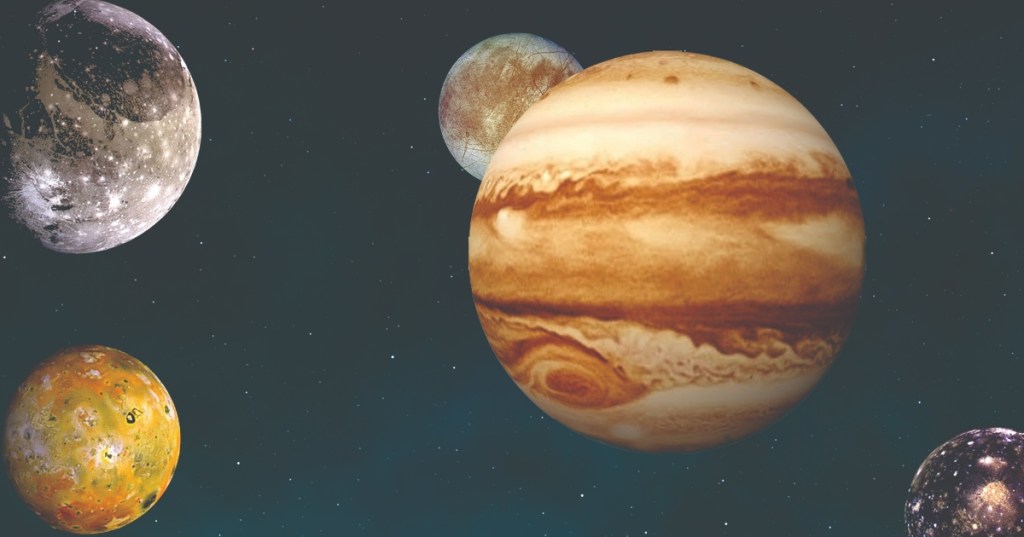Thanks to the discovery of 12 new moons in Jupiter’s orbit, the gas giant officially has the most known moons in the Solar System at 92, surpassing Saturn’s 83 satellites. Dr. Scott Sheppard spent the past couple of years tracking Jupiter’s new moons, which are now published by the Minor Planet Center.
Photo Credit: Pixabay
All 12 of the new moons are too small for official names, take at least 550 days to complete one orbit, and are located in different orbiting groups. Nine are part of distant moon clusters that orbit Jupiter in retrograde, meaning they revolve around the planet in the opposite direction to the inner moons. The other three were within the prograde satellites, meaning they orbit from west to east, located between the large Galilean moons and the distant retrograde clusters.
Astronomers believe the new mini-moons are fragments left behind after larger moon collisions millions of years ago. We don’t know exactly what crashed into the ancient moons, but Sheppard’s research from 2018 suggests that Valetudo, one of Jupiter’s unusually shaped retrograde moons, is leftover material from a larger object that tore through the cluster.
Photo Credit: Pexels
It’s likely that both Jupiter and Saturn have even more moons than currently recorded but locating them is difficult for a couple of reasons. Jupiter gives off a powerful glare and unidentified moons are likely too small to be seen using telescopes that cannot view the entire planet’s system.
